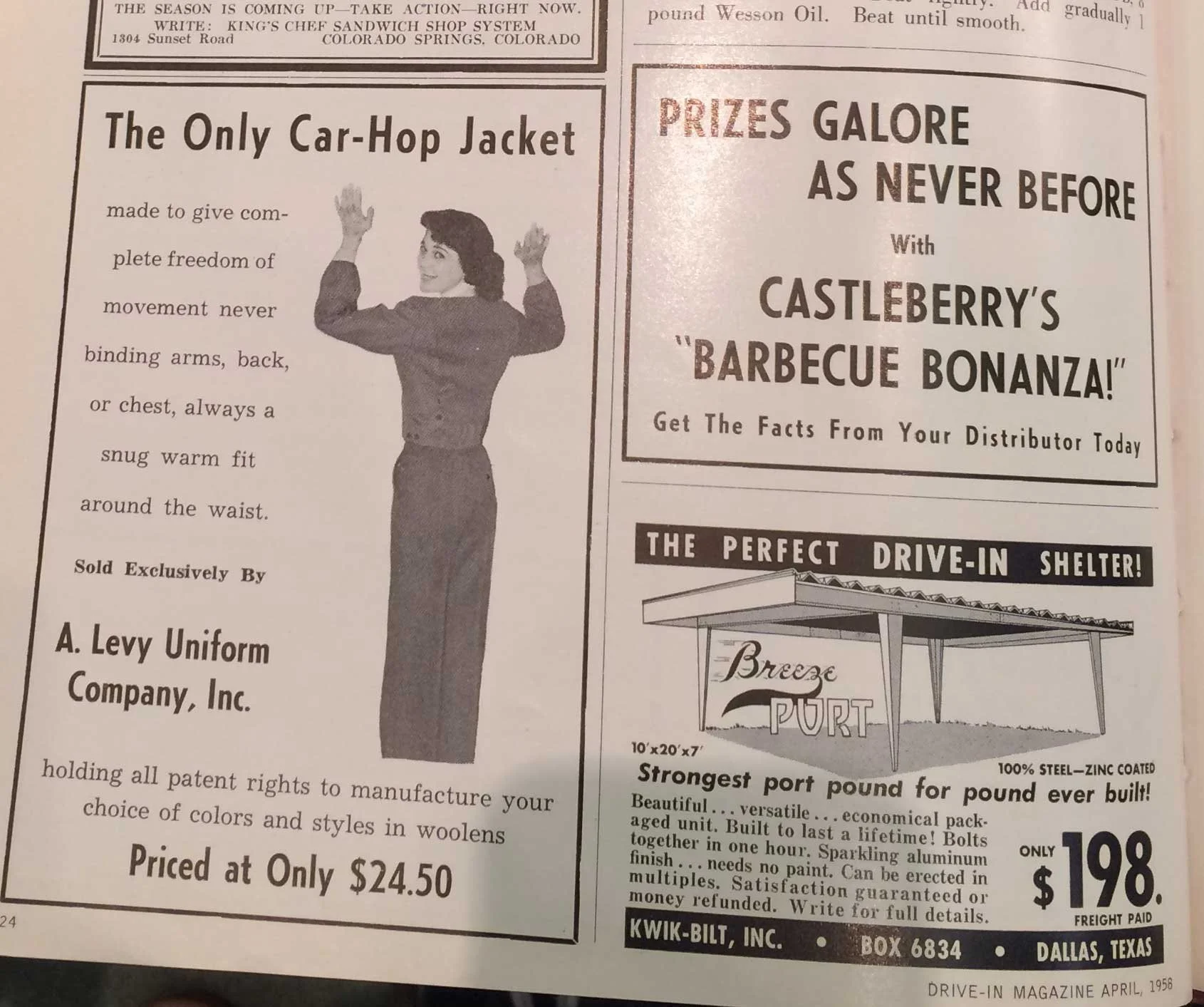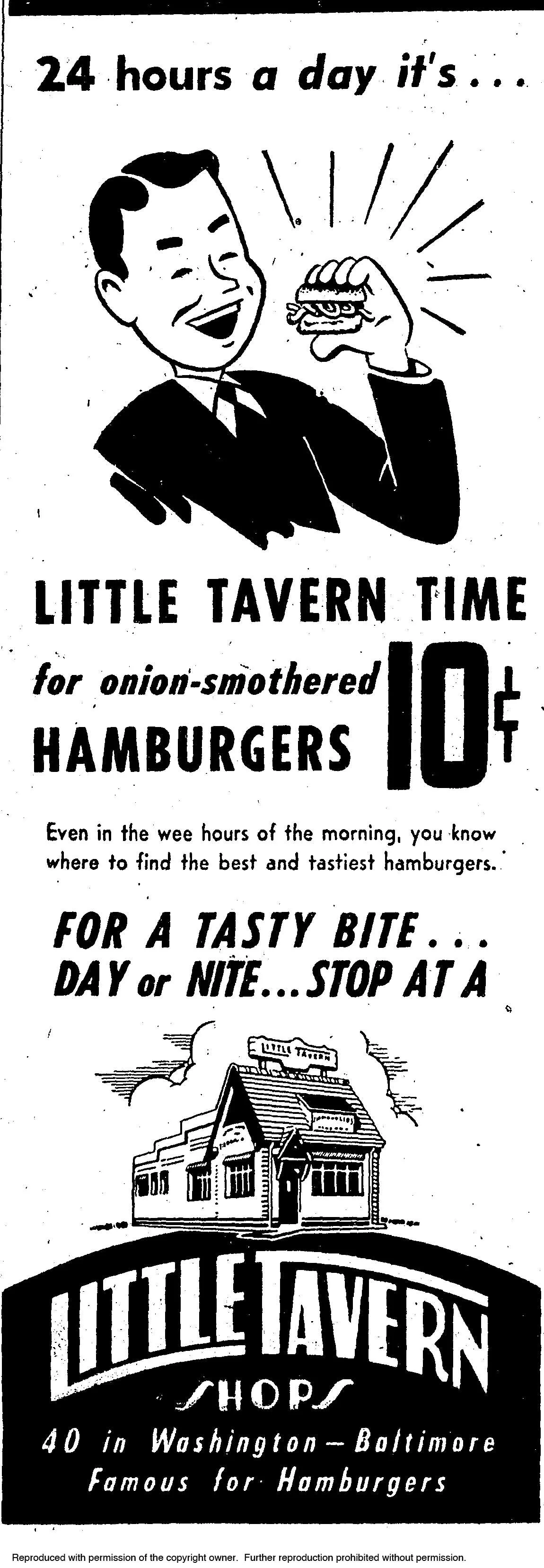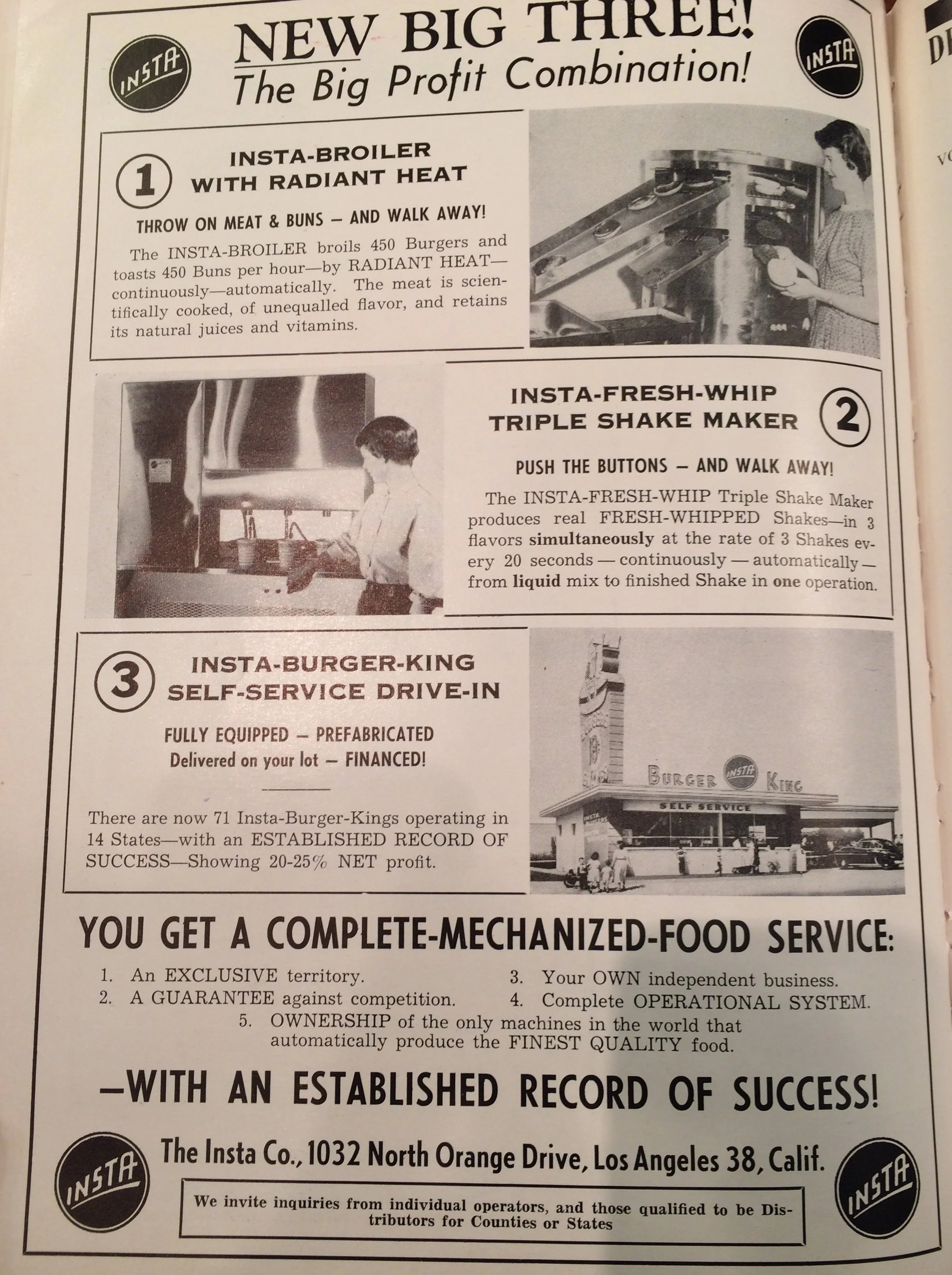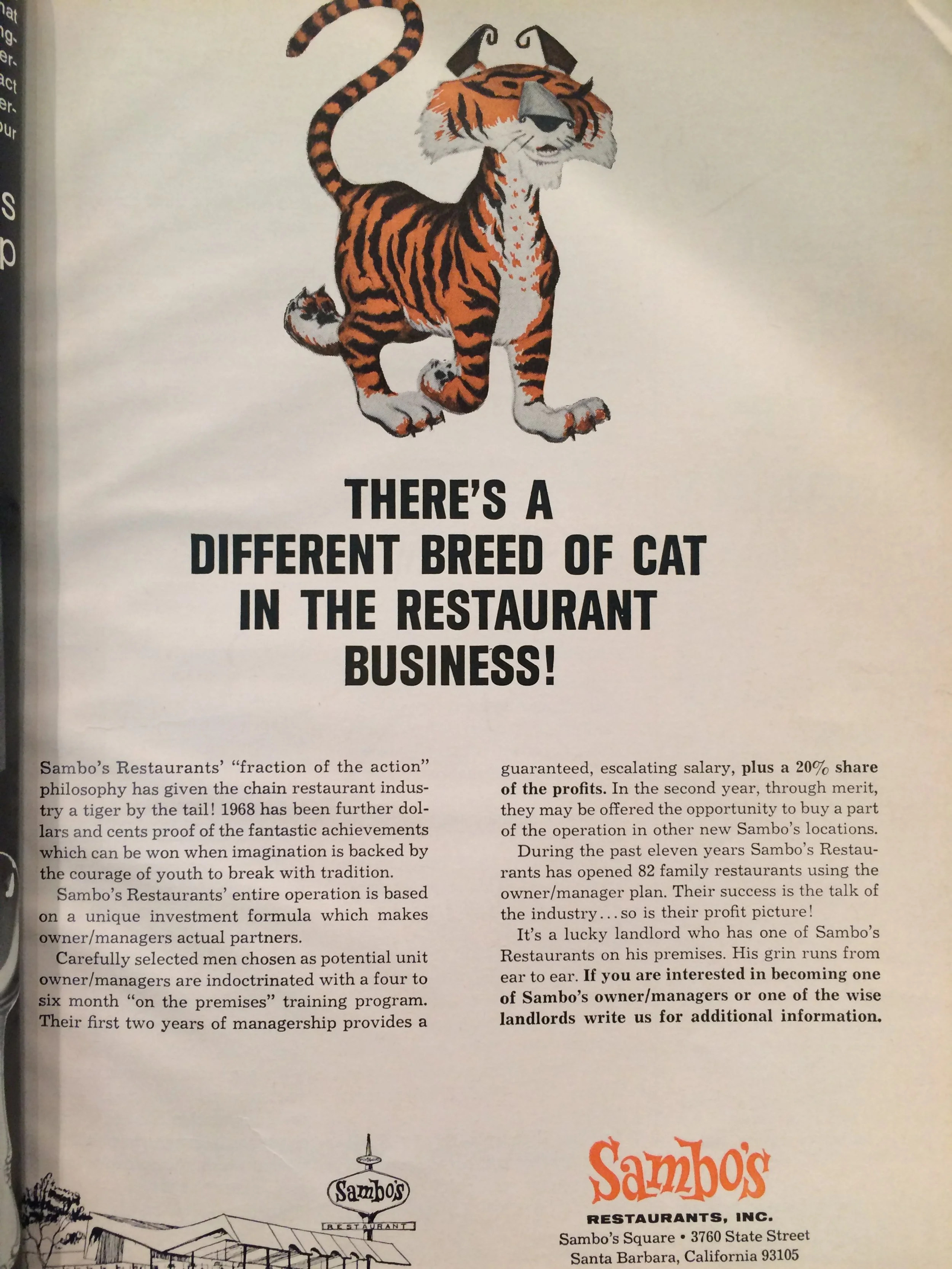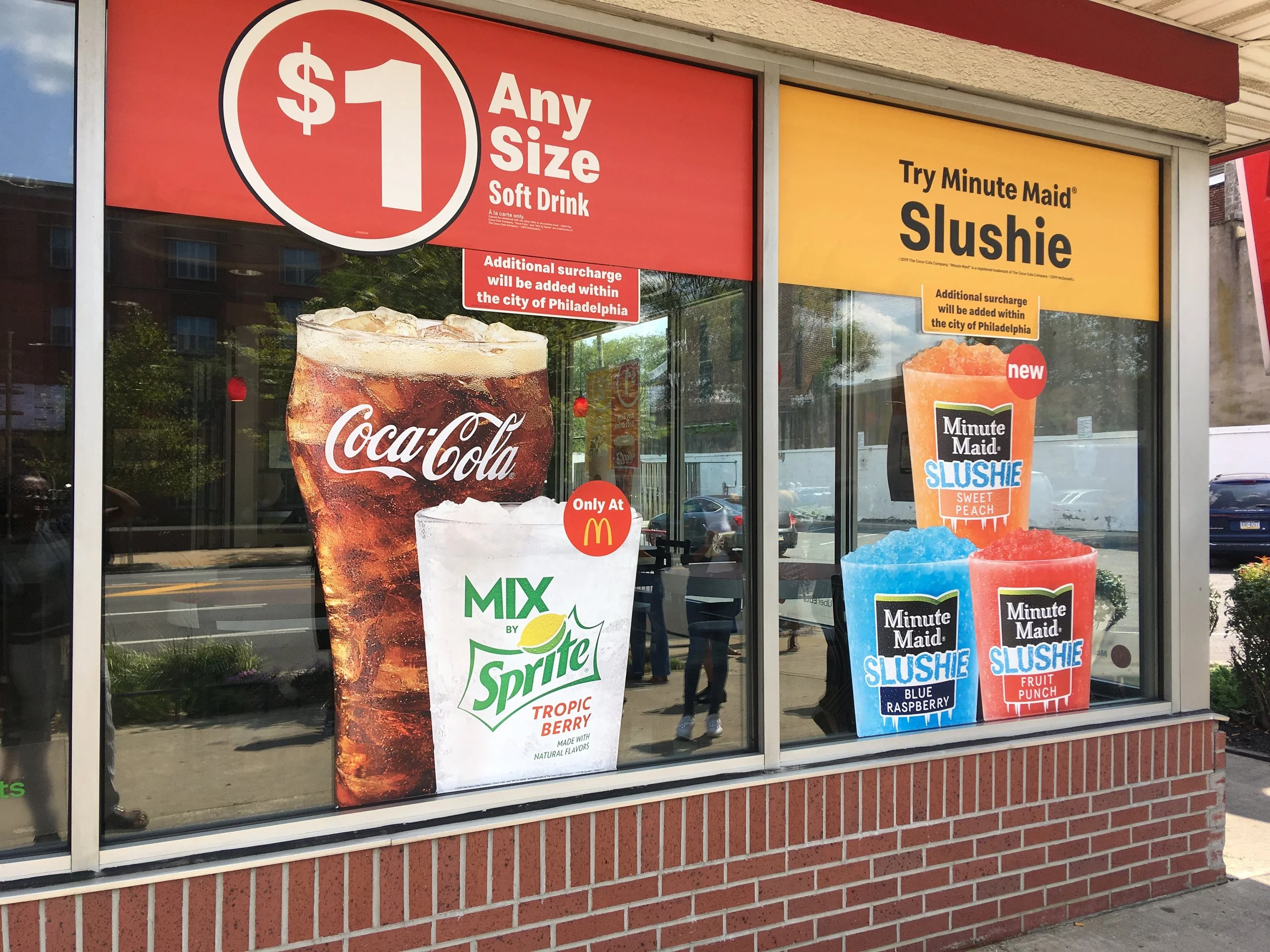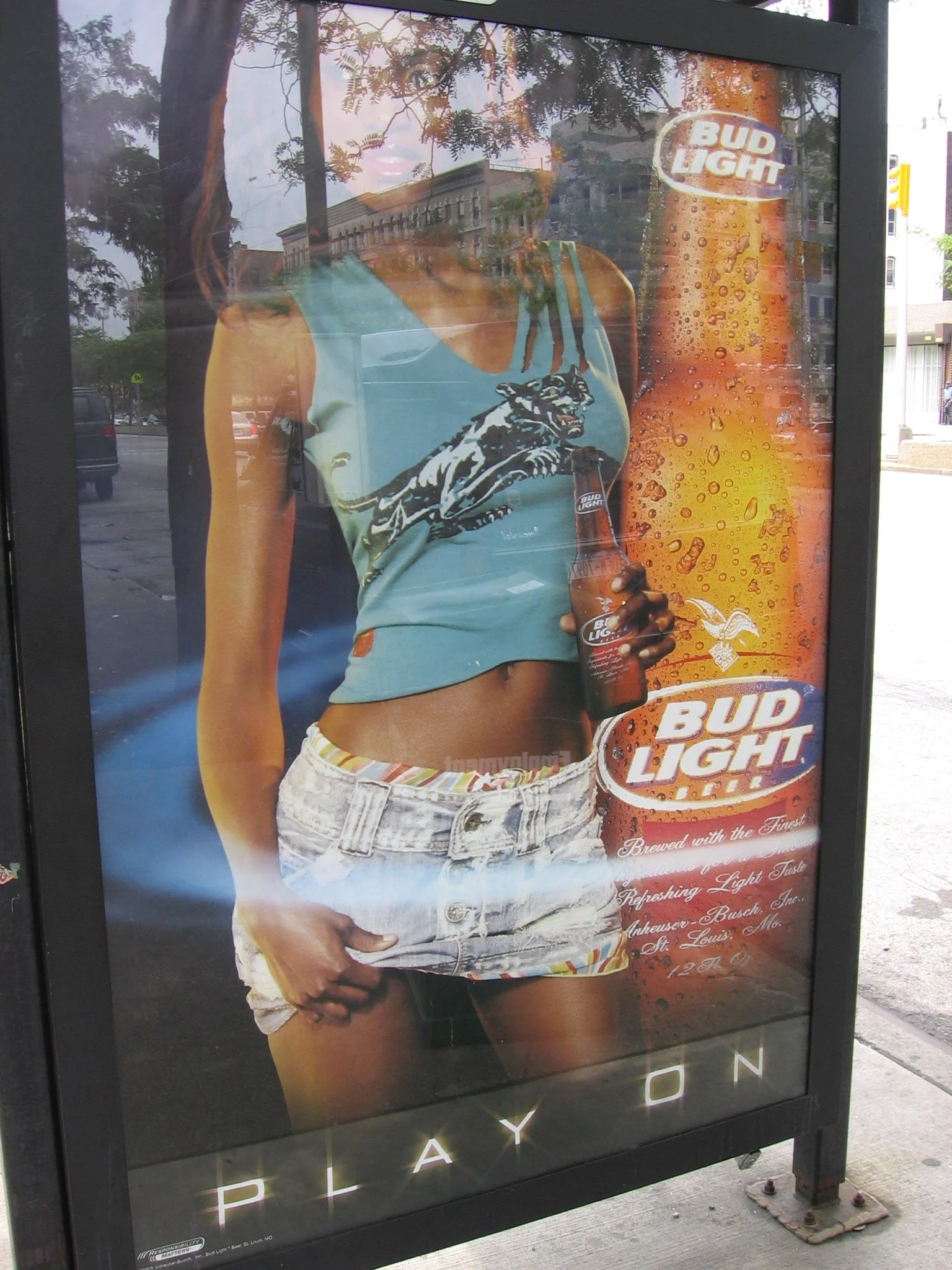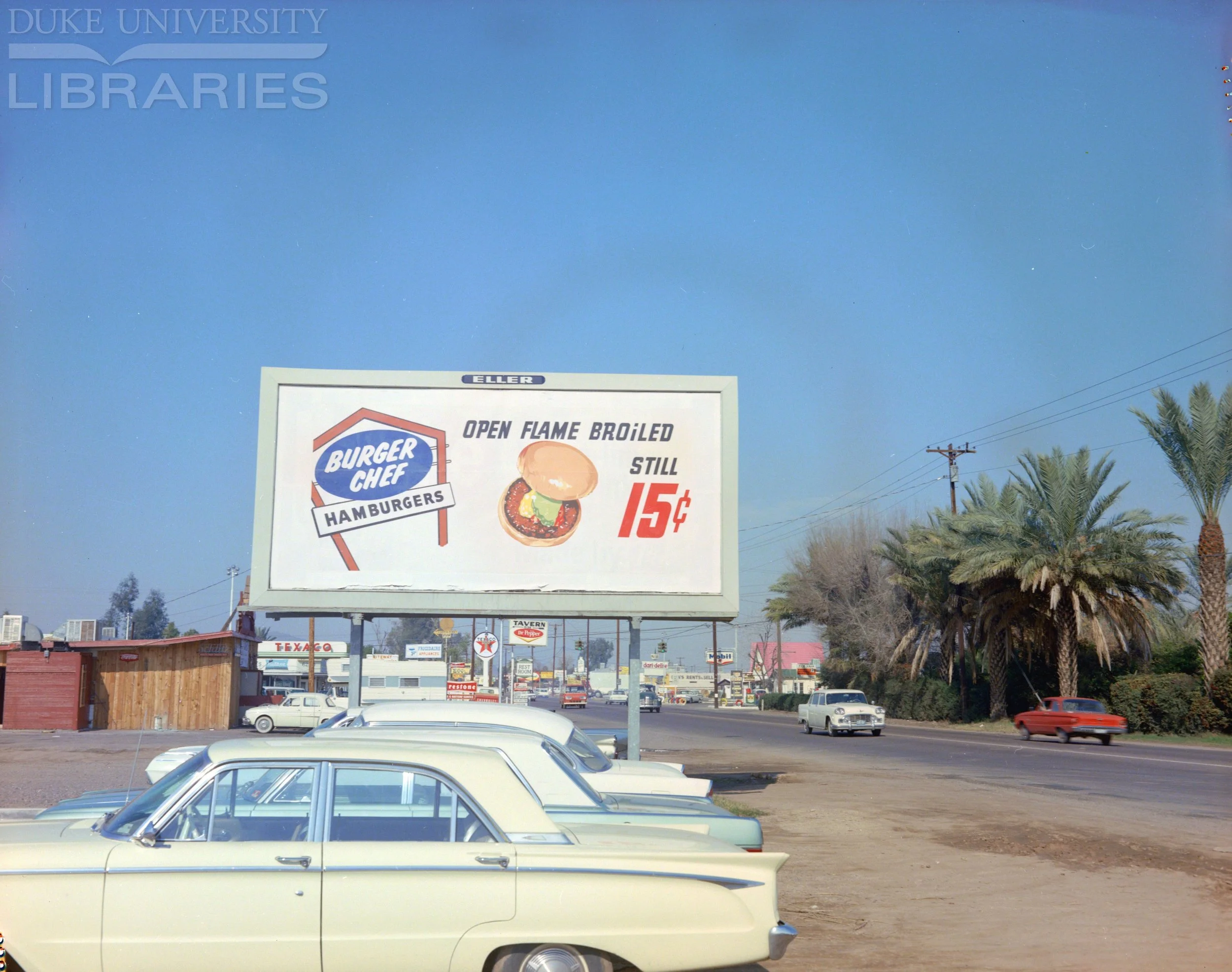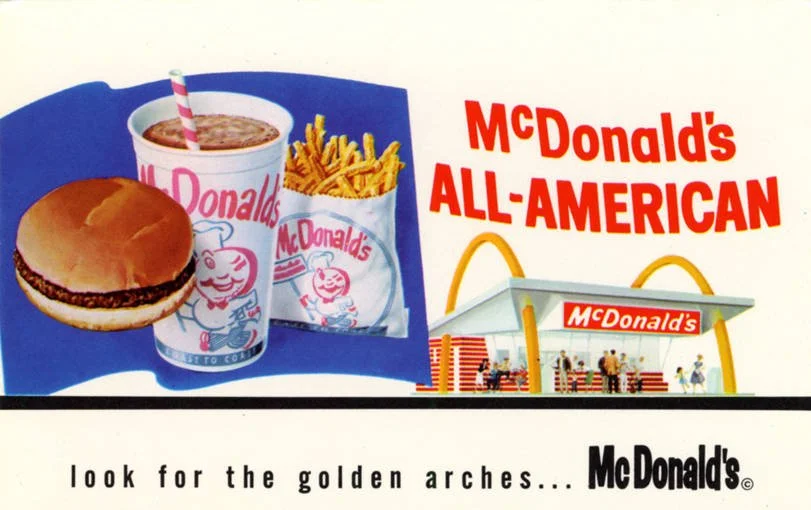Advertisements
Fast food advertising takes several forms, attempting to reach consumers through magazines, newspapers, restaurant windows, and outdoor advertising panels; and also advertising within the industry, particularly for franchise opportunities.
A supermarket circular published in a Chicago newspaper (the Woodlawn Booster) in June 1967 provides a point of comparison for a 15-cent burger. For close to the same price ($.20), one could purchase a canned fruits and vegetables like cream corn or fruit cocktail; a pint of ice cream; a box of Kraft Mac & Cheese; or a pound of Georgia peaches ($.18). Oscar Meyer deli meat was much more expensive at $.69 for a 12-ounce package.
Drive-In Magazine April 1958 #2: A trade journal, Drive-In Magazine published articles on the drive-in restaurant business and featured advertisements from a wide variety of vendors. Shown here are uniforms for car hops, the workers, generally women, who brought food to car windows. Hot Shoppes employed car hops called “curbers”.
Little Tavern ad: One of the many White Castle knock-offs, Little Tavern began in Louisville, KY in 1928.
An advertisement for franchise possibilities at Mahalia Jackson Fried Chicken. As discussed in the book, this brand was one of the major Black franchisors. Fast Food Magazine, 1960.
An advertisement for Burger King franchising, at that time called Insta-Burger King. Drive-In Magazine.
An advertisement for Sambo's, in Fast Food Magazine, 1960. This chain is more of what we would consider "fast casual" today. For more on the branding, see: "Burgers in Blackface: Anti-Black Restaurants Then and Now".
A Burger King store window advertisement in Fulton Mall, Brooklyn, 2005.
Storefront advertising in a Philadelphia McDonald's, 2019. As discussed in the book. research has shown fast food advertising to be directed more at African American consumers.
Fast food has shared many of the strategies used by alcoholic beverage companies, including relying on outdoor advertising, which makes use of entrenched residential segregation. At least fast food ads have not been as insidious as ads like this one. Harlem, New York, 2006.
An outdoor ad for former burger restaurant Bob's Big Boy. The eponymous burger is what McDonald's used to create the Big Mac. Courtesy Duke University ROAD Archives.
An ad for former chain Burger Chef. Courtesy Duke University ROAD Archives.
A postcard advertisement for McDonald's. Source: Curt Teich postcard collection, Newberry Library.
A postcard advertisement for Tastee Freez. Source: Curt Teich postcard collection, Newberry Library.

